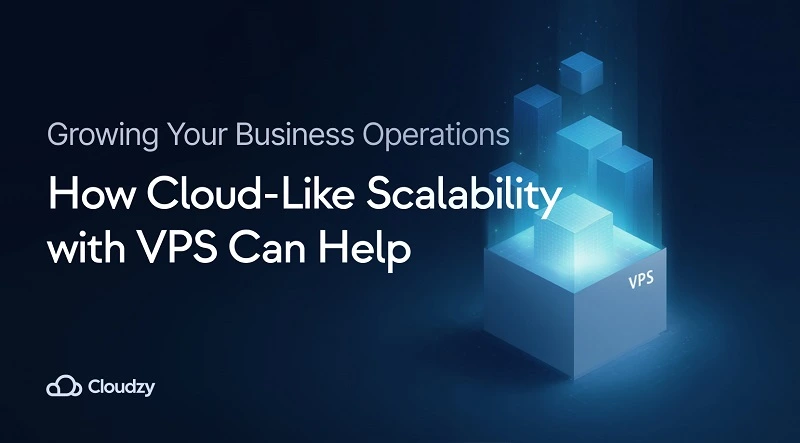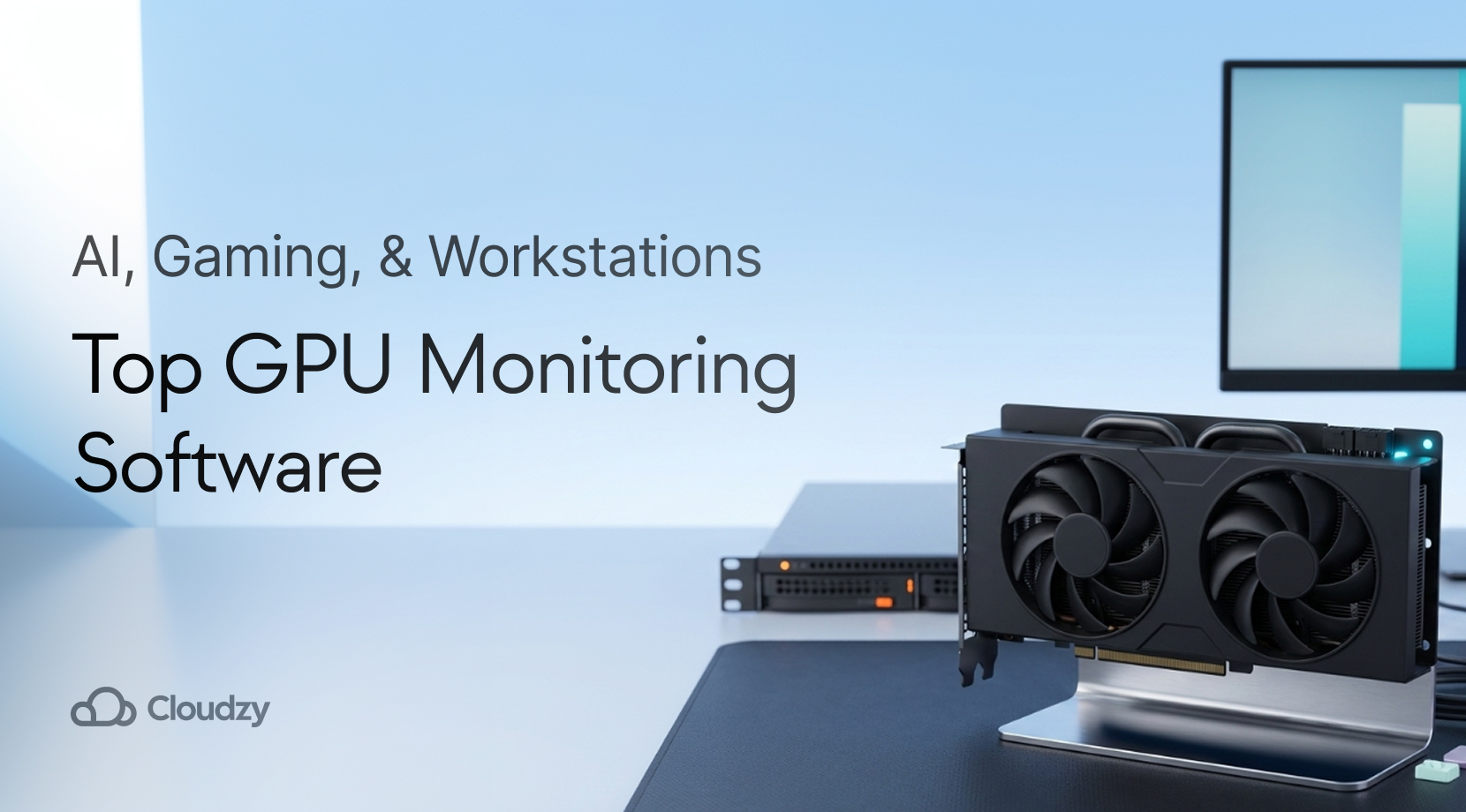Your growth curve is climbing, customers keep coming back, and new services are on the drawing board—great news, unless your servers feel stuck in yesterday’s capacity. Scalable VPS infrastructure for business lets a fast‑moving company add power right when it is needed, without forklift‑style hardware changes. The right plan blends resource scaling, smart capacity planning, and solid performance management so your apps keep their edge while costs stay predictable.
How Scalable VPS Supports Growing Business?

A sales spike should be exciting, not nerve‑wracking. When traffic surges arrive, an under‑prepared stack might struggle with load distribution, long response times, or even downtime. Scalable VPS infrastructure for business removes those pain points by giving you room to breathe.
Modern entrepreneurs often tell me their current setup feels stitched together. If that sounds familiar, consider these signs that it is time to rethink your virtual machines:
- Support tickets climb during promotions.
- Deployments slow down because you juggle disk space.
- Monitoring shows CPU spikes during routine tasks.
- Another department asks for a new web service, and the answer is “maybe next quarter.”
A tidy, modular IT design—built on scalable VPS infrastructure for business—turns each of those hurdles into a quick configuration change. Here’s why that matters: smoother releases, happier users, and fewer late‑night pager alerts. That foundation also plays nicely with our cloud server plans, so you can switch tiers in minutes.
What “Scalability” Means for Your Operations and Apps
Scalability is the difference between racing ahead and feeling stuck in first gear. Under the hood, scalable VPS infrastructure for business adapts in two ways:
- Vertical growth (upgrade): add vCPU, RAM, or NVMe storage inside the same instance.
- Horizontal growth (spread): launch new VPS nodes and distribute traffic across them.
This dual approach balances business agility with budget awareness. It also aligns with LSI disciplines like performance management and on‑demand resources, letting teams deliver reliable service without over‑provisioning.
Cloud security tools add automatic patching, live intrusion detection, adaptive web firewalls, and one-click DDoS shields. Meanwhile, our cloud security architecture micro-segments every tenant, applies zero-trust access policies, encrypts data at rest and in flight, and lines up with GDPR or HIPAA control sets for smoother audits. Logs stream straight into your SIEM, and daily snapshots with multi-region backups follow the guidelines in cloud infrastructure security. Each new VPS plugs into this security mesh automatically, so growth never opens a blind spot or adds extra work.
Quick Glossary
- Capacity planning: estimating future demand so upgrades land before bottlenecks appear.
- Load distribution (basic): spreading user requests across multiple VPS nodes to cut latency.
- Future‑proofing IT: designing today’s stack so tomorrow’s features slot right in.
By weaving those practices together, scalable VPS infrastructure for business gives your apps a clear runway.
Option 1: Easily Upgrade Your Current VPS Power
Sometimes, the simple fix works best. If analytics show that CPU waits, memory pressure, or storage IOPS are the only culprits, a vertical bump is your friend. Upgrading an existing VPS generally takes a quick reboot—minutes, not days.
Before you hit the upgrade button, check this short list:
- Performance snapshot: Have you tracked week‑over‑week metrics?
- License limits: Will extra cores change software subscriptions?
- Maintenance window: Can you schedule during low‑traffic hours?
Once boxes are ticked, vertical growth keeps the same IP, drive letters, and firewall rules intact. That means zero code changes, which our clients love.
| Resource | Starter Plan | Growth Plan | Scale Plan |
| vCPU | 1 | 2 | 4 |
| RAM (GB) | 1 | 4 | 8 |
| NVMe (GB) | 25 | 120 | 240 |
A smooth vertical path keeps focus on feature rollouts instead of server chores. Still, growth rarely stops at one node; that is where horizontal thinking comes in.
Option 2: Adding More VPS to Handle New Tasks or More Users
When workloads branch out—say, a new analytics microservice or region‑based traffic—you may outgrow a single box. Scalable VPS infrastructure for business supports horizontal expansion, so every task finds the right home.
Benefits include:
- Granular cost control: spin up only the components you need.
- Fault tolerance: if one node hiccups, users stay online.
- Specialization: dedicate a VPS to caching, another to databases, and a third to real‑time APIs.
This pattern pairs well with VPS solutions for business expansion, letting teams clone a template, adjust sizing, and deploy in minutes. Behind the scenes, tools like HAProxy or Nginx manage connection routing and SSL termination. Thanks to our globally distributed POPs, latency remains low whether customers click from Berlin or Bogotá.
After launch, proper monitoring keeps tabs on resource scaling, so over‑provisioned nodes can be downsized. That flexibility embodies cost-effective scaling with VPS, avoiding the sunk expense of idle iron.
Planning for Seasonal Peaks or Future Growth
Holidays, product drops, or marketing blitzes bring traffic surges that can crush static infrastructure. A playbook built on scalable VPS infrastructure for business absorbs demand waves without breaking service‑level goals.
Key tactics include:
- Forecast peaks with past analytics and market news for sharper capacity planning.
- Pre‑scale horizontally one step ahead of campaigns, then roll back.
- Automate triggers so new nodes launch when CPU or queue depth crosses a threshold.
- Leverage CDN and edge caching to trim origin load distribution.
Remember, smart scaling is not just about adding; smart removal matters too. Our platform supports hourly billing, so you pay for spikes, not slack time. Pair this with cloud infrastructure security best practices to keep compliance intact while traffic roars.
If you want a deeper dive into vendor choices, the article on Private Cloud Providers offers a useful overview.
How VPS Offers Growth Without Huge Upfront IT Costs
Legacy servers tie up capital, drag on upgrades, and leave teams guessing how much headroom they need for next year. By contrast, scalable VPS infrastructure for business shifts expenses from CapEx to OpEx. You add what you need when you need it—no warehouse full of spare blades.
Below is a side‑by‑side snapshot of cost models:
| Expense Category | Physical Servers | scalable VPS infrastructure for business |
| Hardware purchase | High, paid upfront | None |
| Maintenance contracts | Annual | Bundled |
| Power & cooling | Separate | Included |
| Upgrade cycle | 3‑4 years | On‑demand |
| Write‑offs | Depreciation | Operational expense |
In practical terms, cost effective scaling with VPS frees funds for product features instead of bare metal. It also supports a flexible IT for growing company culture—devs launch ideas, ops meters usage, finance tracks spend in real-time.
Need a storage‑rich collaboration stack? Our Nextcloud VPS packages drop straight into your cluster. They slot right beside your core app nodes, all under one secure dashboard.
Final Thoughts
Growth should feel exciting, not stressful. By anchoring on scalable VPS infrastructure for business, you mix business agility, predictable billing, and strong security under one roof. Toss in VPS solutions for business expansion, tie costs to actual demand, and your tech stack becomes a partner, not a speed bump. When the next sales spike hits, you will already have the horsepower to deliver.
As a quick reminder, our Cloudzy virtual servers ship with a 99.95 percent uptime guarantee, unmetered traffic on fast 1 Gbps links, and optional 10 Gbps burst capacity in select data centers. That reliability means every scaling playbook above rests on steady rails, so your users stay connected while your business keeps climbing.



